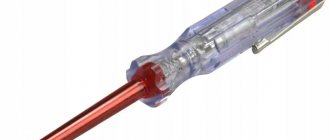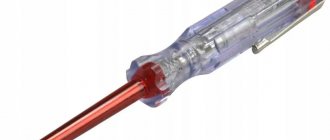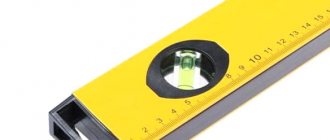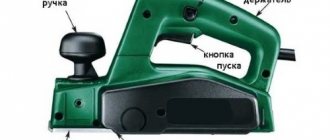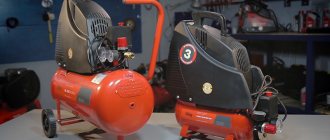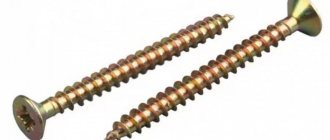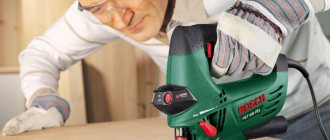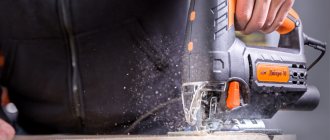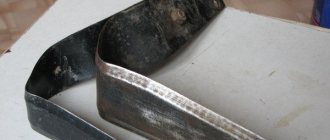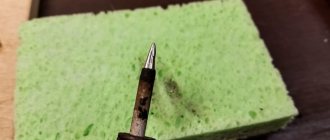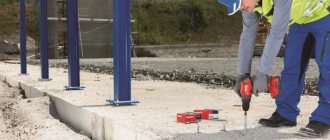Most of the fantastic results of beginners, for example, distilled moonshine at 98 degrees, or 0% alcohol in a brew that was actively fermented and drained, are explained by the incorrect use of measuring devices. If you dip a hydrometer in any liquid that does not contain alcohol, the device will still show a certain strength value, since it gives a result based on density. I'll tell you how to use an alcohol meter to always get the correct readings. Despite the external primitiveness and simplicity of the design, there are many nuances in the work.
An alcohol meter is a type of hydrometer (a device that measures the density of liquids) designed to determine the amount of ethyl alcohol in a solution consisting of alcohol and water without other impurities that can affect the density.
Most models are made in the form of a glass float, the wide lower part of which is filled with a weight of shot and filled with resin (some models use mercury), and the upper narrow part contains a paper scale with divisions.
Everything you need to know about using an alcohol meter
If you are the happy owner of a high-quality alcohol meter, you won’t encounter any particular difficulties in using it.
Included with the device itself, you will also need a small transparent cylinder - 100 ml will be enough to avoid plopping the hydrometer into a jar of moonshine. A thermometer will also come in handy - those with a remote probe are especially good, but any other will do - to correct for temperature. We pour a water-alcohol solution or moonshine into the cylinder, lower the alcohol meter into it - you can give it a slight rotation with your fingers to get rid of bubbles.
Some tasted the drinks, trying to determine how many degrees they had using the receptors on their tongue. Others lit a small amount of alcohol, watched the flames, and decided how high quality the alcoholic drink was.
Alcohol meters come in various models, but most often this device is a cone sealed on both sides, the lower wide part of which contains a weighting agent, and the narrow upper part contains a scale with markings. The main varieties include the following:
- Laboratory. This device is used by professionals, setting the level of liquid strength with fairly high accuracy;
- A digital, also known as electronic, hydrometer quickly and accurately takes the necessary readings, but is expensive;
- If you need to find out about the strength of a liquid, where there are other components in addition to alcohol and water, an optical device is used. This device will show results in a range of up to 40 degrees and provide information about the amount of sugar in the drink. It is usually used by producers of wine and various liqueurs;
- Ryumochny. As the name suggests, this compact specimen is convenient to use for checking liquids for alcohol content in small containers. However, its accuracy leaves much to be desired;
- A wine alcohol meter is used exclusively to determine the sugar content of alcohol (up to 25%) and alcohol content (up to 12%).
For maximum measurement accuracy, there are instructions on how to use an alcohol meter. Compliance with these points is mandatory:
- If you have just diluted alcohol with water, then you need to wait until this chemical reaction is completed, during which the temperature of the solution rises. This usually takes no more than 10 minutes;
- Before immersing the device in liquid, you need to make sure that it is absolutely clean and dry. Wipe it gently with a soft cloth;
- It is better if the temperature of the alcohol-containing liquid is 20C°;
- For the most comfortable use of the device, it is better to pour the test liquid into a narrow and oblong container;
- Immerse the hydrometer slowly and strictly in the middle, without touching the edge of the container and its walls;
When its oscillations stop, you can evaluate the indicators on a scale.
If you accidentally break this fragile glass device, and you need to measure the alcohol content in the liquid right now, then you can try making an alcohol meter with your own hands.
The main components of a homemade meter are a transparent plastic body from a ballpoint pen and a plastic drop bottle
It is important that the body (length - 14 cm) fits tightly into the neck. We cut off the edge of the body a little, but on the other side we leave the part with the cap
Screw the bottom part into the bottle (to make the connection tighter, the bottle can be preheated in hot water)
We cut off the edge of the body a little, but on the other side we leave the part with the cap. Screw the bottom part into the bottle (to make the connection tighter, the bottle can be preheated in hot water).
As soon as the device drops one and a half to two centimeters from the upper border of the bubble, you need to pour glue inside with a pipette (this is necessary to secure the weighting agent) and screw on the cap.
A notch made according to the water level will be considered 0.
Once you learn how to make an alcohol meter at home, you can easily measure the amount of alcohol. In addition, for more convenient use, you can arrange the notches in increments of 5 units.
If you are going to test an alcoholic drink for alcohol content, then keep in mind that the accuracy of the indicators may be affected by impurities included in the composition. The result of testing liqueurs, fruit liqueurs and other products will not be objective, since during production, factory devices are tested only in solutions of alcohol in water.
Cooler
The golden rule for the full development of the flavor bouquet of wine during tasting is to slightly cool it. Naturally, this function is often performed by refrigerators/freezers. However, special coolers have been developed that are easy and quick to use. For example, cooling jackets. This wine cooler consists of interconnected cases with cold batteries. Thus, in any situation, you can cool the wine quickly enough, and also maintain the desired temperature throughout the tasting.
Recently, innovative technologies have become popular, among which the electronic cooler occupies a special place. In appearance, the device looks like an ice bucket, but its size is ideal for a wine bottle. This wine cooler is energy-efficient and absolutely simple, convenient for home use. https://www.youtube.com/embed/-XrntzUXlUg
The nuances of using alcohol meters
One of the main criteria that plays an important role in the production of alcohol is its strength. People have long tried to measure strength using a variety of methods and techniques.
If you are the happy owner of a high-quality alcohol meter, you won’t encounter any particular difficulties in using it. Included with the device itself, you will also need a small transparent cylinder - 100 ml will be enough to avoid plopping the hydrometer into a jar of moonshine. A thermometer will also come in handy - those with a remote probe are especially good, but any other will do - to correct for temperature.
We pour a water-alcohol solution or moonshine into the cylinder, lower the alcohol meter into it - you can give it a slight rotation with your fingers to get rid of bubbles.
We wait until the device levels out and see at what point it stops. If the “float” sank, it means it’s biting! That is, the alcohol is too strong, you need to take an alcohol meter designed for a higher degree. If, on the contrary, it floats on the surface, like a dry log, the alcohol contains too few revolutions and we need a less high-degree device.
Some tasted the drinks, trying to determine how many degrees they had using the receptors on their tongue. Others lit a small amount of alcohol, watched the flames, and decided how high quality the alcoholic drink was.
How accurate is the vinometer?
Using a household appliance, it is impossible to determine the amount of alcohol in homemade wine with an accuracy of one degree. Only optical alcohol meters, which are used only by professionals, can establish the truth without errors. But experienced artisanal winemakers argue that, in the end, the organoleptic characteristics of the drink are much more important, rather than the digital ones.
It is possible to obtain more accurate data, if such a need arises, with the help of additional calculations. For example, you prepared a tincture with 70% alcohol - you took a liter - and added dried ginger root to it. It has little effect on the process of reducing the strength. Then you diluted the resulting alcohol with water - half a liter.
The tincture has become less high-proof - 47-48%. Next you used syrup, which took another 6-7 degrees. And as a result, the strength of the tincture became 40-41%. If we are talking about fruit and berry homemade alcohol, then everything is more complicated, because fresh ingredients contain water, which significantly reduces the degree - on average by 10-15%.
Gift alcohol meter
How to determine the strength of alcoholic drinks?
An alcohol meter, despite its ease of use and rather simple design, is actually a rather complex device.
When using it, you need to observe some subtleties that will help you get a reliable result:
you can’t just throw the hydrometer into a container with liquid, you need to slowly dip it into it; before taking final readings, you must wait until the alcohol meter freezes; during measurements, the device should under no circumstances touch the walls or bottom of the vessel; it is important to select an alcohol meter that is designed to determine the strength of a suitable liquid; Do not immerse the alcohol meter in very hot or cold liquid. This will result in incorrect measurement results.
Most often, these devices are used to find out exactly how many degrees of alcohol are contained in drinks such as wine, moonshine or beer.
Most often, these devices are used to find out exactly how many degrees of alcohol are contained in drinks such as wine, moonshine or beer.
In each specific case, the procedure will be slightly different from each other.
Moonshine
Instructions for measuring distillate strength:
- The device must be wiped with a dry cloth to remove moisture, dust and any other contaminants.
- You should make sure that the moonshine has a room temperature of no lower than 18 and no higher than 25 degrees.
- Pour an alcoholic drink into a glass.
- Carefully place the alcohol meter into it and wait until it locks in one position.
- Evaluate the result obtained.
Watch a video that describes the step-by-step process of measuring alcohol strength:
For different devices, readings must be taken from the top or bottom, so be sure to read the manufacturer’s instructions before taking measurements.
Table of alcohol content and its dependence on temperature:
You might be interested in reading about the famous Lager beer!
Beer
It’s worth saying right away. That a regular alcohol meter, which is designed to determine the strength of alcohol, moonshine or vodka, is not suitable for beer.
You can measure the strength of this alcoholic drink using an optical hydrometer, which is suitable for any alcoholic liquids that contain alcohol, water and other additives.
Procedure:
- Place the device in a vessel with liquid heated to 15 degrees.
- Wait until all gas bubbles disappear.
- Take the obtained measurements.
This procedure must be performed twice. The first time before the start of fermentation, and the second time after its completion.
From the results obtained in the first measurement, the data obtained in the second study are subtracted and the strength of the beer is obtained.
Each manufacturer must indicate on the label or packaging itself the strength of each unit of its alcohol.
Electronic
What is an electronic alcohol meter? Where can I buy it? The electronic alcohol meter can continuously monitor the strength and be used as a thermometer. When making homemade vodka, thanks to modern developments, it is possible to measure the strength not in the liquid, but by controlling the temperature of the alcohol vapor. The consumer, while engaged in the distillation process, may not fill special containers. A digital electronic alcohol meter will determine and show the strength of the resulting composition during the process of making moonshine. These indicators will be more accurate than those of a conventional scale hydrometer.
In appearance, the device has the shape of a round or rectangular box. A sensor in the form of a probe is removed from it. The latter is immersed in liquid and measurements are taken. Where to buy an alcohol meter with a dipstick? There are stores with specialized assortments. You can also find them in regular household appliances or industrial goods stores.
How to use an alcohol meter
The most important thing to remember when working with an alcohol meter is the need to control the temperature of the product and the environment. The standard for measurement is 20 °C. If possible, it should be followed, otherwise a special correction table or our calculator should be used
If possible, it should be followed, otherwise a special correction table or our calculator should be used.
Atmospheric pressure also affects the density of the drink (although not so noticeably); if possible, it should be close to 760 mm Hg. Art. The influence of other factors on the accuracy of readings can be ignored.
To measure strength, you need:
- Pour the alcohol into a narrow glass vessel (about 100 ml in volume). In principle, you can take measurements directly in the jar, but this is not very convenient.
- Place the alcohol meter into the drink, making sure that it floats freely in the liquid and does not touch the walls of the container. If the device sinks, you should take the option for a higher strength, if it floats to the surface - for a lower one (when it comes to ASP).
- Wait until the vibrations subside and take readings. If necessary, adjust the value taking into account the temperature.
When the device is immersed, a kind of funnel is formed around it due to the tension of the liquid. To determine which line to take measurements on (lower or upper), you should refer to the instructions for the device.
If temperature and other recommendations are strictly followed, the measurement error will be minimal.
Significant deviations are possible if there are many impurities in the drink or the device is dirty. The alcohol meter should be thoroughly wiped and washed before use. But this must be done delicately so as not to damage or break the fragile instrument. For the same reason, it is better to store it in a box.
19.12.2018
- 80
- 1
- 2
- 3
- 4
Instructions for use
Rules for correct use or how to use a hydrometer:
- The device must be dry and clean.
- The integrity of the meter must not be compromised.
- The vessel in which the measurement is carried out must be high enough so that the density meter floats freely in the solution being measured without touching the walls or bottom. Usually they take a tall cylinder for hydrometers (without marks, made of white glass).
- Readings are taken along the lower meniscus at the moment when the hydrometer stops.
- Density measurements with a hydrometer are carried out under standard conditions (20°C) or under other conditions, but the result is recalculated and given at 20°C.
Types and design of alcohol meters
An alcohol meter is a hydrometer for measuring the concentration of alcohol in a liquid. It is used in industrial, laboratory and domestic conditions in the production of alcohol, vodka, wine, liqueurs, as well as in the production of moonshine.
Depending on the device, the following types of alcohol meters are distinguished:
- The metal device consists of 2 rods and a metal ball. A graduated scale is applied to the upper rod, and weights are suspended from the lower rod. This alcohol meter makes measurements with high accuracy, down to fractions of a percent, and is used in production and laboratory conditions.
- An optical alcohol meter is a high-precision and express device. It is convenient and easy to use, but has a high cost. This device can operate in multi-component liquids and over a wide temperature range. The measurement is carried out in production and laboratory conditions based on digital analysis of the spectral indicator of light absorption by the liquid.
- Glass device. Simple to use, accurate, cheap, but fragile. It allows professionals and DIYers to measure ethanol concentrations from 0-96% and can be calibrated in the range of 5, 10% or more.
- The electronic alcohol meter has high accuracy and measurement speed, and is easy to use. Equipped with an LCD display to display the result. This device measures the alcohol content in the vapor, the temperature of the liquid and controls the distillation process.
Alcohol meters differ in the type of liquid being measured. A special vinometer has been developed for alcohol-containing sugary drinks.
There are laboratory (accurate) and household alcohol meters, the error of which reaches 0.5%. They are called glass glasses and allow you to determine the strength of the drink poured into a glass.
A common glass alcoholometer consists of a hollow, sealed, float-shaped flask. Its lower wide part is filled with metal shot and filled with resin. The upper part of the hydrometer is equipped with a graduated scale.
What is the device based on?
The principle by which measurements are made is based on Archimedes' law: a body immersed in a liquid is acted upon by a force equal to the volume of the displaced liquid. In words it is difficult to correlate this formulation with the amount of alcohol that we have to determine. However, in practice this pattern can be seen very clearly.
How to use an alcohol meter
An alcohol meter determines the volume of alcohol by measuring the density of the liquid in which it is immersed. Externally, an ordinary household device is a glass cone, similar to a float - with a narrow upper part, on which a scale with divisions is applied, and a wide lower part, which contains a burdening load (shot filled with resin, sometimes mercury).
When the device is immersed in an alcoholic drink, part of the liquid is pushed out, rising to the mark on the scale that indicates the amount of alcohol. This is the operating principle of an alcohol meter in its most general form, but in order to obtain accurate data, you will need to follow a clear algorithm.
Measurement with an alcohol meter
Correctly measuring the strength of an alcoholic drink
People involved in the production of alcoholic beverages are well aware of the importance of using an alcohol meter correctly. It is this device that allows you to determine the amount of pure alcohol in a liquid and with its help you can create drinks with different strengths
But to obtain correct results, it is necessary to purchase a suitable device and use it correctly in the future.
Types of hydrometers
These devices have another name - an alcohol hydrometer.
There are several different varieties on sale today. Each specific type has its own nuances in operation, which must be taken into account when purchasing. Moreover, all types can be used both at home and directly in production.
What different types of alcohol meters consist of and how to check alcohol strength with their help, we will consider further.
Laboratory
This type of alcohol meter is considered the most accurate; the data obtained with its help is 99.9% accurate. It is used when carrying out special laboratory studies of various types.
Each scale of its division is equal to one degree.
The great advantage of this device is its ease of use, as well as the possibility of using it at home. Professional moonshiners in most cases prefer it.
Domestic
It has been specially designed for home use.
The scale of its divisions is also equal to one degree. There are universal household hydrometers, which are suitable for determining the strength of any drink, and individual ones, with the help of which you can determine the percentage of alcohol in only one drink.
Digital or electronic
A digital device for measuring degrees is characterized by high accuracy in measuring the alcohol content in liquid vapor.
- The results obtained during the measurement are displayed on a special mini-monitor.
- With its help you can determine not only the alcohol concentration, but also the temperature of the liquid.
Such devices are considered the most accurate, modern and easy to use. At the same time, they are also the most expensive.
Optic
Using this device you can determine the strength of alcoholic beverages up to 40 degrees.
The great advantage of this device is that it can be used to determine the strength of a variety of multi-component alcohol, such as liqueurs, wines, liqueurs and vermouths.
Simple and reliable to use.
Ryumochny
This device is specifically designed to measure the strength of alcohol already poured into a glass. It is compact in size, easy and quick to use. It is distinguished by high accuracy of the obtained measurement result.
Wine meter
As is already clear from the name of this device, it was specially created to determine the strength of various wines.
Its use allows you to determine not only the strength of these alcoholic drinks within 20 degrees, but also allows you to find out the exact concentration of sugar in them.
All these types of devices are further divided into two large groups, depending on the material they are made of:
- glass devices are light in weight and inexpensive, but require particularly careful use;
- metal alcohol meters are reliable, durable and have a higher price.
People who use hydrometers of various types say that when used correctly, there is no significant difference between these two types.
How to determine the strength of alcoholic drinks?
An alcohol meter, despite its ease of use and rather simple design, is actually a rather complex device.
When using it, you need to observe some subtleties that will help you get a reliable result:
you can’t just throw the hydrometer into a container with liquid, you need to slowly dip it into it; before taking final readings, you must wait until the alcohol meter freezes; during measurements, the device should under no circumstances touch the walls or bottom of the vessel; it is important to select an alcohol meter that is designed to determine the strength of a suitable liquid; Do not immerse the alcohol meter in very hot or cold liquid. This will result in incorrect measurement results.
Existing instrument models
There are several varieties that differ in functionality and price. In addition, not all of them are intended for artisanal alcohol production.
- The most common and widely used option is a household alcohol meter with a measurement scale of 0-96. Quite easy to use, but not always accurate, which is often the fault of the moonshiners themselves, who do not follow the measurement rules.
Household alcohol meter with measurement scale 0-96
- Laboratory-type hydrometer - can be used both in industrial production and at home. Among those who make alcoholic drinks on their own, the most popular is the ASP-3 model, which is created in accordance with GOST. Designed for measuring alcohol in the range from 40% to 70%.
Hydrometer ASP-3
- A glass alcoholometer is designed to measure the contents of tasting containers. That is, it can be used to determine the strength of the alcohol you are about to drink. It has an extremely large error, and therefore is rarely used.
Shot alcohol meter
- The digital model is the most modern option, which gives the most accurate readings without any additional calculations. It is very convenient to use directly during the distillation process. The only, but significant, disadvantage is the high price.
Electronic alcohol meter
- An optical hydrometer is a professional device that is not used at home.
Optical alcoholometer
- Wine alcoholometer or wine meter - used to determine the strength level in tinctures, liqueurs, homemade wines, that is, in alcoholic drinks that contain a lot of impurities. It has a scale with a small range of values - 0-12. At the same time, it can measure the sugar level in finished alcohol and in mash.
Measuring degrees in wine. Wine meter.
What to consider when handling the device
It is necessary to understand that an alcohol meter is a rather fragile thing, so you should not leave it anywhere. It can easily be broken or crushed. It is best to store the device in the packaging in which it was supplied. If cracks and chips suddenly appear on the glass, then such a device can no longer be used.
Alcohol meters can measure the strength of only water-alcohol solutions that do not contain sugar, juice, or foreign substances that appear when infused with wood chips. All additional inclusions change the density of the drink, which ultimately makes measurements inaccurate.
General instructions on how to use an alcohol meter
By default, household hydrometers are configured to work with liquids with a temperature of 20 degrees. Therefore, before starting measurements, you should use a water thermometer. If the temperature is higher or lower, the accuracy of the measurements will decrease and you will have to calculate the amount of alcohol manually using the tables supplied with the device.
Before immersing the device in liquid, you need to wipe it and make sure that the flask is free of grease and dirt, as well as wet spots
When lowering the alcohol meter into alcohol, you need to make sure that it does not come into contact with the walls of a large container, which is also important for the accuracy of measurements.
How to use a household alcohol meter
How to use an alcohol meter with a 0-96 scale
This device is suitable for determining the strength of homemade moonshine and vodka. It is intended exclusively for use in water-alcohol, “pure” mixtures. Measurement algorithm:
The resulting moonshine should be diluted with water and left for 4-8 minutes to stabilize. Wipe the device with a dry and clean cloth. You should first use a water thermometer to make sure that the temperature of the liquid is 20 degrees. But even if it is more or less, it’s not so scary. The device usually comes with tables for correcting values; you can use them. Pour the moonshine into a tall narrow vessel, or into a regular glass. We immerse the wide part of the device in the liquid so that it does not touch the walls
You cannot let go of it - a sharp blow to the bottom can damage it. We carefully unclench our fingers and monitor the behavior of the “float” - the liquid should reach a certain mark on the scale. This will be the alcohol indicator. At the end, we take out the device, be sure to wipe it dry and put it in the packaging for storage.
You can watch the video on how to use an alcohol meter:
How to use the ASP 3 alcohol meter
This device has the same principle of operation as a household one, but shows greater measurement accuracy. It is manufactured according to GOST, which already indicates the proper level of quality. This option is the most popular among those who have been making home brews for a long time. It is not much more difficult to use than a household one.
- To increase the accuracy of the readings taken, it is recommended not to measure the strength of moonshine immediately after it has been diluted with water. It is better to wait about a day - during this time all chemical reactions in the drink will complete, releasing heat, and the temperature will be as close as possible to the required value - 20 degrees.
- We carefully wipe the device dry, making sure that there are no greasy stains on the surface.
- We measure the temperature of the liquid.
- We lower the device exactly in the middle of the vessel with moonshine, making sure that it does not touch the walls and bottom.
- We wait until the alcohol meter stabilizes, he should not drown. If this happens, then you need a model with a different range.
- We look at what level the liquid is at and note the resulting value.
- After work, we wipe the device again and carefully put it in the box.
How to use a wine alcohol meter
It is not possible to measure the strength of homemade wine, beer, liqueur, or mash with a conventional hydrometer. It's not designed for that. You need another device - a vinometer, which simultaneously determines the amount of alcohol and sugar in the drink. This is an indispensable thing for artisanal winemakers, which must be in the home arsenal.
Measurement process steps:
We fill a separate container with the finished product - you can use a measuring cup or a regular one, the main thing is that it is high enough, otherwise the liquid will overflow. Place the container on the table so that it stands level. Place the device in the drink - it should not come into contact with the walls. Carefully remove your hand - the “float” should hover in the liquid. Look at the scale - to what value the liquid has reached is the strength indicator.
Determination of alcohol content with a glass alcohol meter
An alcohol hydrometer is designed to work with water-alcohol solutions, in other words, to determine the proportion of ethyl alcohol in a solution of alcohol and water, without unnecessary impurities. The density of vodka or alcohol is usually indicated as a percentage.
We suggest you read: How to get rid of midges in the kitchen?
The peak of popularity of the device occurred in Soviet times, when during the period of perestroika M.S. Gorbachev signed a decree “On strengthening the fight against drunkenness.” But the Russian people have long-standing traditions and not a single holiday is complete without alcohol, so during Prohibition, enterprising citizens began to make moonshine. And to determine the strength of the drink, you needed an alcohol hydrometer, or a household alcohol meter.
Alcohol meters are easy-to-use devices that must be in the arsenal of any person who produces various alcoholic beverages.
Everything is elementary - you immerse a measuring device containing a load of a certain mass into the liquid. The device pushes out part of the liquid, floating above the surface to the division that corresponds to its “degree” - Archimedes’ law.
During the manufacturing process, alcohol meters are calibrated in a water-alcohol mixture and are able to accurately determine the strength of alcohol ONLY if the latter consists exclusively of alcohol and water.
Not from sugar, fruit juices extracted from berries, fermented wort (there are separate wine meters for wines, we will talk about them below), but only and exclusively from alcohol and water. Any additive, even a minor one - for example, essential oils in distilled sambuca or absinthe - has an unpredictable effect on measurements, since the density of the substance increases - the device shows fewer degrees than it actually is.
Metal
A metal alcohol meter is a variable mass hydrometer, graduated in conventional units.
- This alcohol meter (Fig. 25) consists of a brass ball, to the upper and lower parts of which rods are soldered: the upper one with a scale, the lower one with a slight thickening at the end for hanging weights.
- To protect against oxidation, the alcohol meter and its weights are gold-plated.
- On the upper rod (scale) there are 10 large equal divisions, with the numbers 0, 1, 2, 3, 4, 5, 6, 7, 8, 9, 10 from bottom to top.
- Below, under the zero line, is the number 100.
- Each large division of the scale is in turn subdivided into five small ones; therefore, each minor division is equal to 0.2 major divisions. All divisions are counted from bottom to top.
Place the weights on the upper thin part of the rod carefully so as not to scratch the gold plating of the rod, and hold it lightly until it drops to the bottom of the rod. Each alcohol meter has its own number, which is printed on all weights to it. The weights of one metal alcohol meter cannot be used to work with another alcohol meter.
We suggest you read: How to remove the smell of alcohol from your mouth: quickly kill and eliminate the smell in the morning, how to fight it off?
We determine the strength depending on the temperature in the cube
Most industrial stills are equipped with a thermometer, which is used to monitor the heating temperature of the mash. If you know something about temperature indicators, you can determine when the first drops will begin to drip, when you can finish selecting the “heads” and to what level the “body” should be driven.
- At 88 - 89°C, the alcohol begins to evaporate, that is, a trickle of alcohol is about to flow. As soon as you notice the first drops in the tube attached to the coil (transparent silicone tubes are most often used now), turn down the heat or switch the stove to a lower mode; you should not sharply heat the mash any further, otherwise foam may erupt.
- Select the tails (this is approximately 10% of the expected amount of moonshine) and begin to distill the main part (the body). When you see that the thermometer needle has reached the number 95, it means that the strength of the outgoing liquid is now around 40°.
- The needle moves further, and somewhere at 97°C you need to remove the jar with the main distillate and either take away the tails until the temperature rises to 98°C, or stop distilling.
Having analyzed the coincidence of the temperature in the cube and the strength of the distillate several times, you will know exactly how many degrees the liquid has that is currently flowing into the jar you placed.
Safety precautions
Before checking the density of the electrolyte with a hydrometer, you should wear rubber gloves.
It is also important to protect the sleeves, since this liquid is very aggressive. If electrolyte gets on your skin, immediately rinse the affected area under running water. This liquid has an aggressive effect not only on the skin, but also on clothing. It is better to use things made of thick fabric, since the electrolyte can partially corrode them. Be careful not to get liquid into your eyes. Safety glasses are a good idea.
Now about our favorite “degrees”.
In our time, this is a non-systematic, non-standard (not GOST), outdated unit and in our time it no longer means anything or means what any “clever” homemade moonshiner-Kulibin from the 19th – early 20th centuries can attribute to it.
In the 19th century, during the time of Dmitry Ivanovich, at the beginning of the 20th century, this unit corresponded to certain values. And not only massive, but also voluminous!! There were different calculation systems, if you are interested in details, look at the article from the journal “Issues of the history of natural science and technology” No. 2, 1999 “FROM THE HISTORY OF RUSSIAN SPIROMETRY”, L.B. Bondarenko.
You see, I didn’t even feel like drinking! - Well, where is it - without degrees? It's better to drink milk! Firstly, you have been confused by numerous calculations floating around the Internet: A liter of vodka with a strength of 40° contains 572 g of water and 381 g of grain ethyl alcohol. If the label of a bottle of vodka says 40% vol. (forty percent of the volume), then in a liter of such vodka (according to Father Dmitry Ivanovich Mendeleev) there are 635 g of water and only 318 g of grain ethyl alcohol, which is approximately 35°.
For 572 g of water - 381 g of alcohol - there is more alcohol here. – 40° For 635 g of water – 318 g of alcohol – this is less strong! – 40% or
35° In the first case, the vodka was 40 degrees, in the second - 40 percent. The first vodka is stronger and 40 degrees is not equivalent to 40 percent.
It makes you want to convert percentages into degrees, right? Don't count! In this passage there should be MASS fractions instead of degrees. Yes, there are volume percentages and there are mass percentages. Naturally, different results are obtained. But in the alcoholic beverage industry, mass fractions (when calculating alcohol content!) are not used. Volume percentage only! Secondly, William Pokhlebkin brought great confusion into our minds with his book about vodka (Pokhlebkin V.V. “The History of Vodka”).
Personally, I respect this man very much, but, unfortunately, he was not friendly with the exact sciences and wrote a lot of unnecessary (or rather incorrect) things, both about vodka and about Dmitry Ivanovich (see below). It is from him that this confusion with degrees, mass percentages still comes... Here you can write a lot about his mistakes, but it’s better to conclude:
We must remember: from the 70s of the 20th century to this day, designations on labels are indicated only in volume percentages, for example: 40% vol. Also, since that time, degrees have been mentioned out of inertia, but these degrees are equal to volume percentages, not mass percentages. Moreover, they often wrote back then: “forty proof vodka – 40°, that is, 40% vol.” That is, they said that it was the same thing.
Therefore, if some smart guy comes up to you and asks:
- How can we convert percentages into degrees? answer: “You are confusing, young man, degrees and mass fractions!” There are no degrees in official standards now. Everything is measured (in the liquor industry, written on labels) in percentages by volume. If you so want, you can convert the mass fractions into volume fractions, but this is only for personal self-affirmation and has nothing to do with the contents of the bottle. If you notice a designation in degrees on some bottles, then be sure that this is either left-handed/scorched vodka or illiterate (super illiterate) manufacturers who did not care about the standards. (Unfortunately, we have to admit that our time is the time of the illiterate, to say the least. This is where most of our troubles come from.)
Well, now for lovers of everything about Dmitry Ivanovich Mendeleev.
Here is what Pokhlebkin wrote:
While studying alcohol-water solutions, Mendeleev “noticed” their features and drew attention to their connection with the appearance of different qualities in different water-alcohol mixtures. It turned out that the physical, biochemical and physiological qualities of these mixtures are also very different, which prompted D.I.
Mendeleev to look for the ideal ratio of volume and weight of the parts of alcohol and water in vodka. While various volumes of water and alcohol were previously mixed, D.I. Mendeleev mixed various weight samples of water and alcohol, which was much more difficult and gave more accurate results. It turned out that the ideal alcohol content in water should be 40°, which was never obtained by mixing water and alcohol by volume, but could only be obtained by mixing exact weight ratios of alcohol and water.
That last sentence is absolute nonsense from a scientific point of view.
And, besides this, when mixing alcohol and water, everything goes smoothly on the full “section of the curve” and 40 percent or degrees do not stand out in any way on the graphs. Mendeleev in his works nowhere states that vodka should be exactly 40 degrees - no one has conducted “physical, biochemical and physiological” studies, so there is no ideal ratio!
Home press
The wine press offers benefits:
- maximum juice extraction;
- high speed of the process;
- ease of use.
A wine press introduced into the system for preparing homemade wine will allow you to quickly prepare the pulp for the active fermentation stage and immediately load a large amount of pulp into the fermentation tank.
A press intended for use at home may have different capacities; The most common equipment has a volume of about 5 liters. with bowl characteristics (diameter, height) from 15 cm. Such a device will significantly improve the set for winemaking. https://www.youtube.com/embed/vIavEVQxOc4
So what, I will never know how many degrees there are in my tincture?
Accurate to the nearest degree - never. But fortunately, we are not Medeleev professors writing dissertations on metrology, but home winemakers and moonshiners, who care, first of all, about the taste and organoleptic characteristics of the drink. In other words, if we are talking about the strength of the tincture-liquor-liqueur, approximate, calculated data will be enough. So you need to rely on your own calculations and feelings - you want it to be less strong, just add water, what’s wrong with that? Just remember to give this drink an extra couple of weeks of rest before drinking.
However, there is a special type of alcohol meters called “optical”. These are complex and expensive devices, most often with a limited range of measurements (usually 0-40° or slightly higher), but they are capable of determining both the amount of alcohol and the amount of sugar in a drink. But experienced winemakers say that everything is not clean here either. They say that an optical alcohol meter accurately measures only liquids consisting of water, alcohol and sugar, and other impurities seriously reduce the adequacy of measurements. In general, the same troubles, only in profile.
The density of the finished product is calculated based on the ingredients included in its composition. For example, you prepared using a liter of 70-proof alcohol. Let's say that the dried root of the degree was almost not stolen. Then we diluted the tincture with half a liter of water - the strength was about 46-47 degrees. And then they sweetened it with a syrup made from 100 ml of water and 100 ml of sugar - from the water the strength dropped by another three degrees, the sugar “ate” about the same amount - after all, the volume of the drink increased. The estimated strength of the drink is 40-41 degrees. The situation is much more complicated with tinctures made from berries - dried ones actively absorb alcohol, fresh ones contain a lot of water, reducing the alcohol strength by an average of 10-15 percent, or even more, depending on the juiciness and structure of the fruit. In general, the devil will break his leg.
Buy hydrometers
Any laboratory, auto repair shop or medical facility cannot do without a device for determining density. Hydrometers can be purchased from most laboratory supply suppliers. When choosing who to purchase a device from, you should pay attention to:
- in what units is the hydrometer calibrated;
- range of the measured value;
- scale or precision of division;
- instrument error;
- is there a thermometer?
Each manufacturer, before transferring its measuring products for sale, conducts quality control. For hydrometers, control is carried out for each unit of product, indicating the device number and its individual error. Therefore, the same density meter model from different manufacturers will have its own error.
It would seem that such a simple device as an alcohol meter should be in every hardware store. This is true, but the most ordinary alcohol meter will not work for an experienced moonshiner or winemaker. Where to buy an alcohol meter for a master of his craft? Knowledgeable people turn to the Moonshine Laboratory online store. The store with a professional team, which was created for connoisseurs and specialists in their field, has in its assortment several types of alcohol meters, which will be discussed a little below.
Our online store sells alcohol meters and other equipment for moonshiners and winemakers not only in Moscow. We deliver throughout the Moscow region and throughout Russia. Cooperating with Russian Post and many courier deliveries, we constantly send our goods to other areas of our vast homeland.
The price of an alcohol meter can vary greatly (from 90 rubles to 800 rubles), which depends on the type of alcohol meter and its effectiveness.
Alcohol meters are divided into two types of devices:
- For measuring moonshine, vodka, alcohol and other related drinks that are characterized by high fluidity.
- Wine meters that allow you to measure the strength of wine, mash and any other thick drinks.
In Moscow, you can buy an alcohol meter at the Moonshine Laboratory store, of any type and for any drink.
Here you will find instruments for measuring the strength of wine and mash:
- Household wine meter. The simplest device that allows you to measure the amount of sugar in a liquid (0-25%), as well as the amount of alcohol (0-12%).
- Laboratory vinomer. A more accurate device that will allow you to determine the amount of alcohol in drinks with a strength of up to 25o. Determination of the mass fraction of sugar is also possible.
For moonshiners and lovers of strong alcoholic drinks who do not know what and where to buy an alcohol meter, devices from the following list are suitable:
- Alcohol meters of the APS-3 type, which differ in the gradation of the measured strength of the drink. There are three types of such alcohol meters, for drinks with an alcohol content of up to 40%, from 40 to 70%, and for very strong drinks and alcohols - over 70%.
- Devices for advanced and experienced moonshiners - alcohol meters combined with a thermometer. These devices, like APS-3, are divided depending on the strength of the drink - from 0 to 60% and from 60 to 100%.
- A glass alcohol meter, which allows you to measure the strength of a drink from 0 to 96 vol., is a simple and trouble-free device that is easy to use.
- A universal alcohol meter that allows you to measure the strength of a drink from 0 to 96 vol.
Many novice moonshiners and winemakers do not know where a high-end alcohol meter is sold. In fact, you don’t even need to search - buying an alcohol meter in the Moonshine Laboratory online store is very simple - place an order for any amount and after a few days you will receive the equipment you need.
